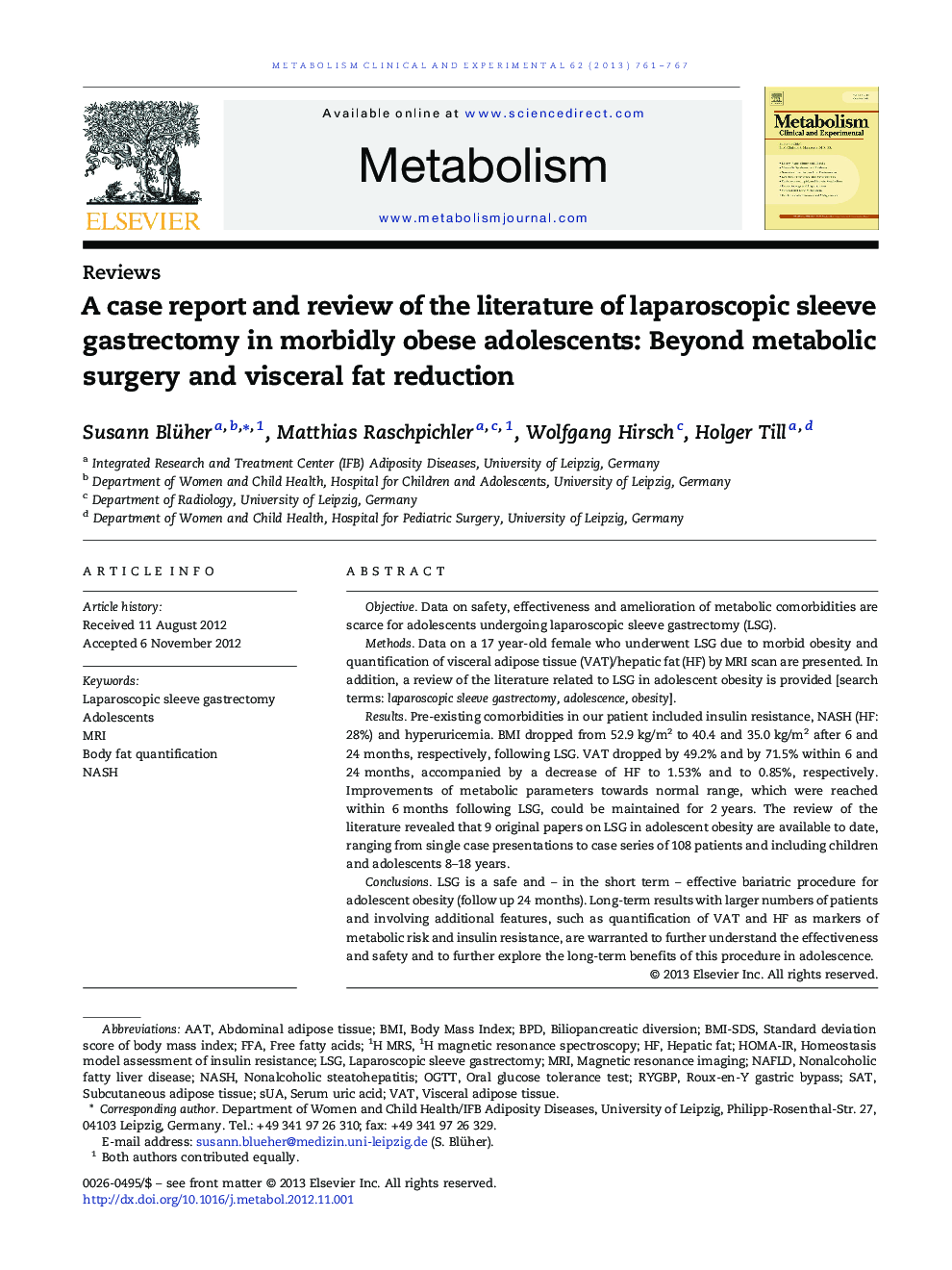| Article ID | Journal | Published Year | Pages | File Type |
|---|---|---|---|---|
| 2805517 | Metabolism | 2013 | 7 Pages |
ObjectiveData on safety, effectiveness and amelioration of metabolic comorbidities are scarce for adolescents undergoing laparoscopic sleeve gastrectomy (LSG).MethodsData on a 17 year-old female who underwent LSG due to morbid obesity and quantification of visceral adipose tissue (VAT)/hepatic fat (HF) by MRI scan are presented. In addition, a review of the literature related to LSG in adolescent obesity is provided [search terms: laparoscopic sleeve gastrectomy, adolescence, obesity].ResultsPre-existing comorbidities in our patient included insulin resistance, NASH (HF: 28%) and hyperuricemia. BMI dropped from 52.9 kg/m2 to 40.4 and 35.0 kg/m2 after 6 and 24 months, respectively, following LSG. VAT dropped by 49.2% and by 71.5% within 6 and 24 months, accompanied by a decrease of HF to 1.53% and to 0.85%, respectively. Improvements of metabolic parameters towards normal range, which were reached within 6 months following LSG, could be maintained for 2 years. The review of the literature revealed that 9 original papers on LSG in adolescent obesity are available to date, ranging from single case presentations to case series of 108 patients and including children and adolescents 8–18 years.ConclusionsLSG is a safe and – in the short term – effective bariatric procedure for adolescent obesity (follow up 24 months). Long-term results with larger numbers of patients and involving additional features, such as quantification of VAT and HF as markers of metabolic risk and insulin resistance, are warranted to further understand the effectiveness and safety and to further explore the long-term benefits of this procedure in adolescence.
